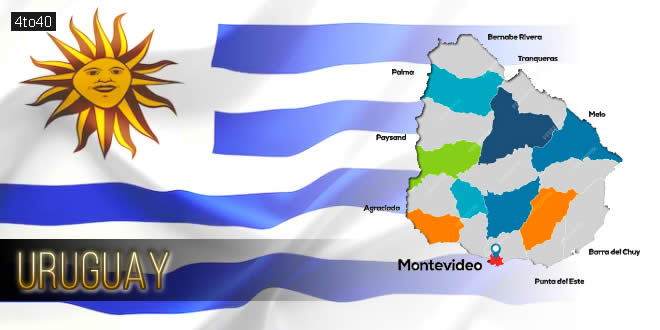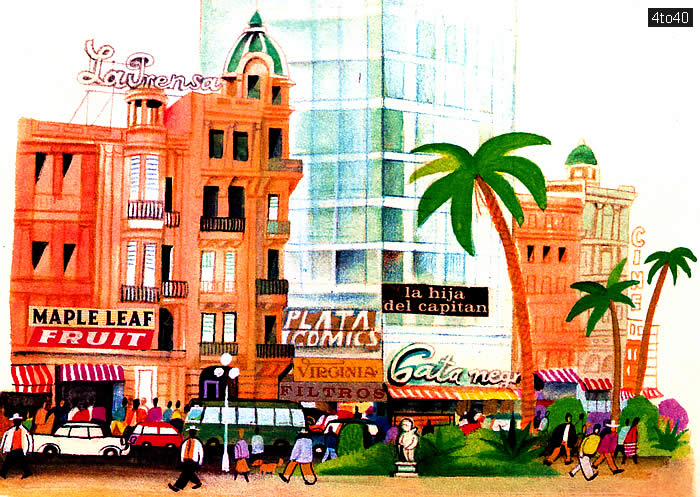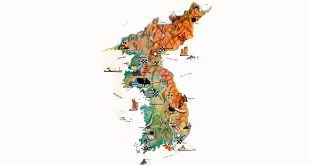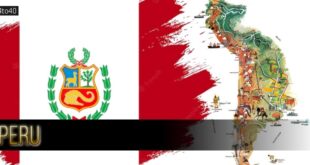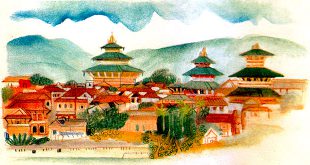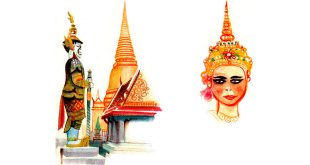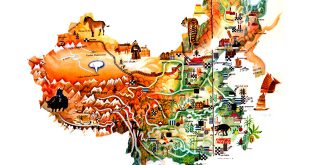Republica Oriental del Uruguay : Country Name
System of government: Republic
Capital: Montevideo (pop. 1,346,000)
Location: In South America at the mouth of the Uruguay on the Atlantic coast; bordered by Argentina and Brazil
Area: 176,215 sq km
Population: 2,940,000
National composition: Mostly of European descent, but there is also a minority of Amerindians
Religion: Roman Catholic
Official language: Spanish
Currency: Uruguayan peso = 100 centesimos
Administrative divisions: 19 departments
Other major cities: Paysandu (pop. 95,000)
Highest elevation: Cerro de las Animas (501 m)
Chief river: Uruguay with its tributary, Negro
Climate: Subtropical, warm and wet
Motto: Libertad o muerte (Spanish)
“Liberty or Death”
Anthem: National Anthem of Uruguay
“Himno Nacional de Uruguay”
Location Map:
Uruguay Encyclopedia & Facts:
The country is low-lying, with slightly rolling hills. The coastal plains, with their remnants of the original tropical rainforest, are Swampy. Mangrove swamps are found along the rivers but on the whole the country lacks forested areas.
Uruguay is predominantly a ranching country with huge herds of cattle, sheep and horses. Crop farming, producing wheat, rice, maize, sorghum, potatoes, Sugar cane, fruit and grapes, is a feature but less important.
The mineral resources are quite limited and include some marble, limestone, iron and uranium ore. The predominant industry is meat-packing and processing which is entirely geared to the enormous produce of Uruguayan pastoral farming. The food- processing industry also includes sugar-mills, dairy plants and vin- eries. Other __ well-developed industries are textiles, paper, glass, cement and leather. Power resources are considerable.
The country has a good system of road and railway transport. River shipping on the Rivers Uru- guay and Plate is very important.The national capital, Montevideo,is a major international sea and airport. | Uruguay has large areas of grassland where huge herds of cattle and sheep are raised.
 Kids Portal For Parents India Kids Network
Kids Portal For Parents India Kids Network
